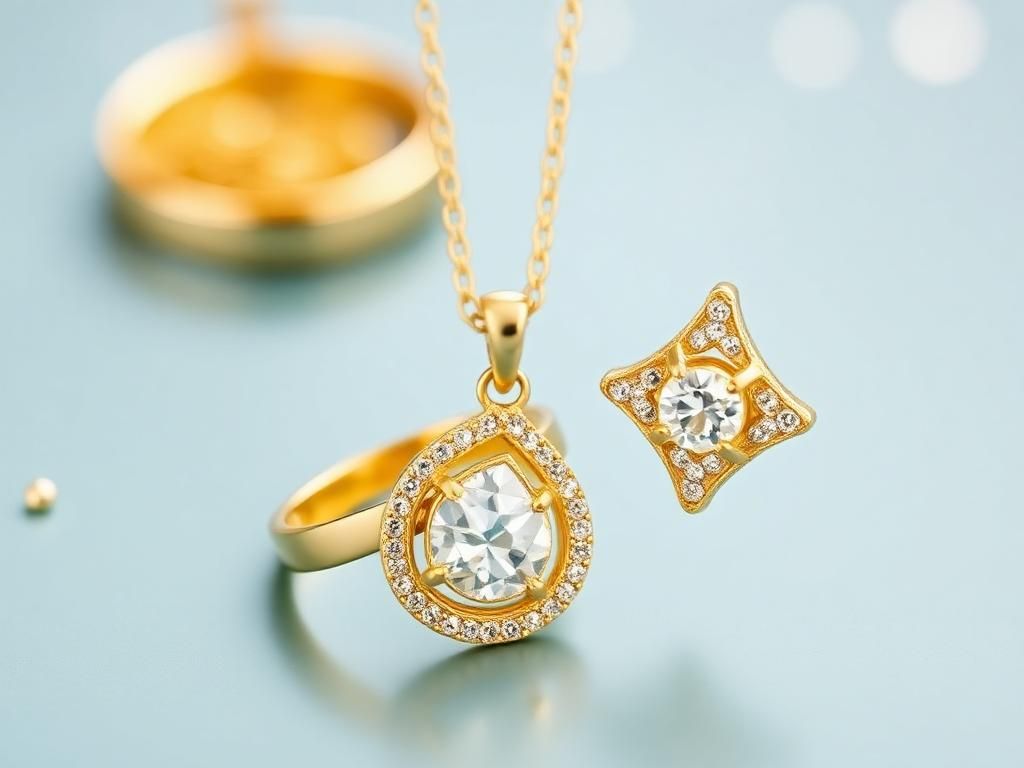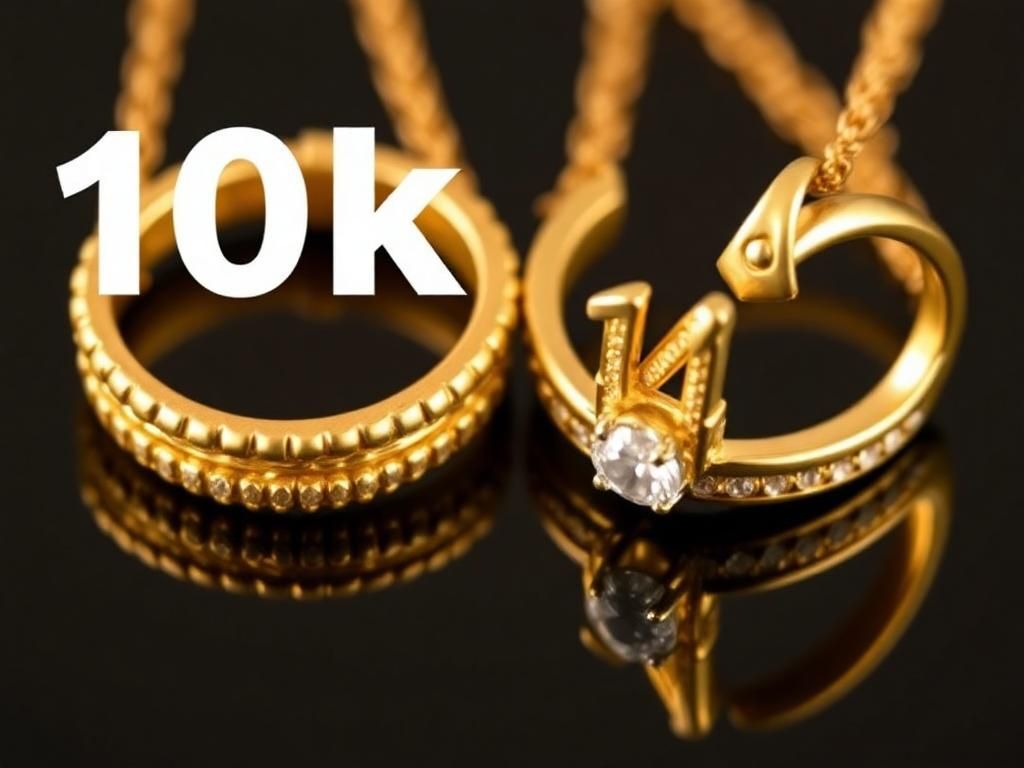Gold has long been considered one of the most treasured precious metals in the world. Its beauty, rarity, and intrinsic value have made it a favored choice for jewelry, investment, and even currency throughout history. When navigating the realm of gold jewelry, one pivotal factor to understand is the Karat system. The Karat system is utilized to express the purity of gold, and it determines not only the value of the jewelry but also its overall quality and wearability. This article seeks to compare 10k or 14k gold, providing essential insights to help readers make informed choices that align with their preferences and lifestyles.
What is Gold Karat?
Understanding the Karat System
The term “Karat” (often abbreviated as “K”) measures the purity of gold in jewelry. Pure gold is assigned a designation of 24K, which signifies that it consists of 100% gold without any alloys. The Karat system operates on a scale where each Karat represents a fraction of pure gold. Thus, the term “10k gold” indicates that out of a total of 24 parts, only 10 parts are pure gold, equating to 41.7% gold content. Similarly, “14k gold” indicates 14 parts out of 24, or 58.3% gold. Understanding these differences is crucial for making informed purchasing decisions regarding 10k or 14k gold jewelry.
Common Myths about Gold Purity
There are several misconceptions about gold purity that can mislead prospective buyers. One common myth is that 24k gold is the only “true” gold. While 24k is pure, lower karats, such as 10k or 14k gold, offer unique characteristics that can suit different needs. Additionally, some believe that lower karat gold, such as 10k, is of inferior quality. In reality, the alloying process can enhance the metal’s durability without significantly diminishing its value. For example, the addition of copper or silver can result in a more robust product that withstands daily wear and tear.
Characteristics of 10k Gold
Purity and Composition
10k gold is made up of 41.7% pure gold and 58.3% alloy metals. The common alloys used in 10k gold jewelry often include copper, silver, and sometimes zinc or nickel. These alloys not only help enhance the overall hardness of the gold but can also influence the metal’s color and appearance.
Benefits of 10k Gold
One of the most notable benefits of 10k gold is its durability. The high percentage of alloys contributes to its strength, making it highly resistant to scratches and dents—ideal for everyday wear. Additionally, 10k gold typically comes at a lower price point than higher karats, making it an attractive option for budget-conscious consumers. For active individuals, including students and those in professions where hands-on tasks are frequent, 10k gold jewelry can serve as a fantastic choice without compromising style.
Drawbacks of 10k Gold
Despite its several advantages, 10k gold has its drawbacks. The lower gold content can lead to skin reactions in some individuals, particularly those with sensitivities or allergies to certain metals. Furthermore, the color may appear less rich than that of higher-karat gold, such as 14k. This can impact the perceived status or luxury associated with the piece, as some people view higher-karat gold as a symbol of wealth.
Characteristics of 14k Gold
Purity and Composition
On the other hand, 14k gold is composed of 58.3% pure gold and 41.7% alloy metals. The alloys in 14k gold often include nickel, palladium, or copper, each contributing to the overall characteristics of the final product. The higher gold content in 14k gold gives it a warmer hue compared to 10k gold.
Benefits of 14k Gold
The refined balance between durability and gold content makes 14k gold an excellent option for a wide range of jewelry styles. It offers a rich color that many people find appealing and is versatile enough for occasion wear, from casual settings to formal events. Its enhanced gold content allows it to hold its value better over time, which can be a significant factor for those looking to invest in jewelry.

Drawbacks of 14k Gold
However, the advantages come at a cost, as 14k gold is often priced higher than its 10k counterpart. Buyers should also consider that while it is durable, it may be more prone to scratches over time than 10k gold. Furthermore, depending on the specific alloys used, some individuals might experience an allergic reaction to certain elements in 14k gold.
10k vs. 14k Gold: A Side-by-Side Comparison
Purity and Price Comparison
| Karat | Gold Content | Alloy Content | Average Price per Gram |
|---|---|---|---|
| 10k | 41.7% | 58.3% | $20 – $25 |
| 14k | 58.3% | 41.7% | $30 – $40 |
Market prices for 10k or 14k gold can fluctuate based on various factors, including gold market trends and alloy prices. Understanding these components can help prospective buyers select the best option for their budgeting needs.
Durability and Maintenance
When comparing the durability of 10k gold to 14k gold, it is essential to note that 10k gold is considered harder due to the higher alloy content. This hardness means it can withstand more wear and tear, making it lower-maintenance for everyday use. In contrast, while 14k gold is still durable, it may require slightly more care to maintain its aesthetic and prevent scratches.
Aesthetic and Color Comparison
The visual differences between 10k and 14k gold can be quite noticeable. 10k gold typically has a light yellowish hue, while 14k gold boasts a warmer, richer gold tone. The specific alloys present in both types also contribute to variations in color, such as the presence of palladium for a brighter finish or copper for a rose-colored appearance.
Ideal Uses for 10k and 14k Gold
Different lifestyles and preferences will dictate the most appropriate choice between 10k or 14k gold. For those seeking affordable options for jewelry that can endure daily wear—such as students or active individuals—10k gold is an excellent option. Conversely, professionals or those looking for a more luxurious gift may find that 14k gold better aligns with their desires and preferences.
Making the Right Choice for You
Factors to Consider
Making a decision on whether to choose 10k or 14k gold requires introspection about several factors:
1. **Budget Considerations**: Reflect on how much you are willing to spend on your gold jewelry.
2. **Frequency of Wear and Lifestyle**: If you frequently wear your jewelry, the durability of 10k gold might be more appealing.
3. **Allergies or Sensitivities**: Be aware of any potential allergic reactions to alloy metals found in either karat.
Personal Style and Jewelry Type

Your personal style plays a significant role in determining which karat suits you best. If you are selecting an engagement ring, for instance, you may prefer the richness of 14k gold. However, for a trendy bracelet or casual wear, 10k gold could reflect your everyday lifestyle. Visiting various jewelry stores and trying on different pieces can also offer important insights into which karat complements your aesthetics.
Conclusion
In weighing the differences between 10k or 14k gold, it’s essential to consider your individual needs and preferences. While both offer distinct qualities, understanding their unique characteristics allows you to make an informed decision. Therefore, consulting with a knowledgeable jeweler can provide tailored advice to explore the options best suited for you.
Additional Resources
Where to Buy
For quality jewelry, consider reputable jewelers like [Jared](https://www.jared.com/) or local family-owned businesses known for their craftsmanship. Each option comes with its unique advantages—online stores often feature greater variety, while physical stores allow for an in-person experience.
Maintenance Tips
To ensure the longevity of your 10k or 14k gold pieces, follow these best practices for cleaning and care:
– Regularly clean your jewelry with a mild soap and water solution.
– Avoid exposing your pieces to harsh chemicals or abrasive materials.
– Store your jewelry in a soft pouch or separate compartments to prevent scratches.
FAQ Section
1. **What is the difference between 10k and 14k gold?**
– The primary difference lies in the purity: 10k gold has 41.7% gold content, while 14k gold contains 58.3%.
2. **Is 10k gold good for everyday wear?**
– Yes, due to its durability, 10k gold is excellent for daily wear.
3. **Can I get an allergic reaction from 14k gold?**
– It’s possible, especially if it contains nickel; it’s essential to check the alloy components for allergies.
4. **Which is more expensive, 10k or 14k gold?**
– 14k gold is generally more expensive than 10k gold due to its higher gold content.
5. **Does 10k gold tarnish?**
– While it can tarnish, proper care can minimize this issue and maintain its shine.
6. **What type of gold is best for someone with sensitive skin?**
– Consider hypoallergenic options, which may be more common in higher karats like 14k gold, depending on the alloy.
7. **Can I wear 10k gold in water?**
– Yes, but it’s best to avoid prolonged exposure to water to maintain its quality.
8. **What’s the best way to store gold jewelry?**
– Store in a cool, dry place, ideally in a pouch or a separate compartment to reduce scratching.
9. **Is 10k gold suitable for engagement rings?**
– While some choose 10k gold for its affordability and durability, others prefer the richer look of 14k gold for engagement rings.
10. **Are there specific care products for gold jewelry?**
– Yes, you can find specialized cleaning solutions for gold; always check for product safety before use.